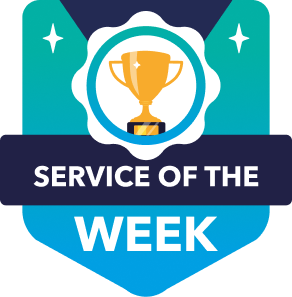Do you want to launch a content marketing strategy? Are you looking for different tactics to meet your business goals?
In this article, we will discuss the real purpose of content marketing. Afterward, you’ll learn different steps in achieving content marketing success.
Let’s get started.
Introduce Your Brand in the Market
Brand awareness describes consumers’ familiarity with a specific brand or service.
Bringing awareness helps customers trust you to do business with them. In addition, customers who know you stand out from competitors are more likely to purchase.

These are the five types of brand awareness:
1. Brand recognition - Consumers' ability to recognize an identifying attribute of one company versus a competitor
2. Brand recall - A qualitative measure of a consumer's ability to recall a brand's name
3. Top of mind - The first brand that consumers think of when they consider a target product, niche, or industry
4. Visual branding - Made up of all the images and graphics that represent a brand's unique characteristics
5. Brand dominance - People turn to your brand for industry expertise, insights, motivation, inspiration, or any other position of authority
The five types of brand awareness are aided by content marketing. This happens when you share high-quality content throughout the consumer journey. As a result, you can show customers who you are as a company and what your brand represents.
Establish Authority and Expertise
Google uses E-A-T (Expertise, Authoritativeness, and Trustworthiness) to determine which pages to rank on search results.
It is a set of signals that aid quality raters in deciding which material to index first.

Even if your content reaches a broader audience, search engines will buy into it if the quality is up to standard. A content marketing strategy would help address this need for distributing valuable and relevant content to your audience.
Keep in mind that E-A-T is not a collection of SEO ranking factors. It is only a metric to assess your content.
Aside from content marketing, ways to meet these criteria are getting positive reviews and increasing brand mentions on authoritative sites.
Build an Online Following
A follow in social media refers to a user who chooses to see all of another user's postings in their content feed.
Getting users to follow their accounts and eventually building a community is an important goal for internet businesses.
However, the online following is not only limited to social media. You can also count email subscribers or monthly website visitors as followers for your brand or business.
This metric is significant since they visited your site, subscribed to your email list, or followed you on social media. They did these things because they are interested in what you offer as a brand.
This makes it easier to turn them into customers, which is one of the primary aims of content marketing. Therefore, you must keep engaging people with the content you publish on these channels.
Identify Highly Qualified Leads
When you speak to a prospect and learn about their problems, you have a highly qualified lead (HQL) on your hands.
Then, you and the prospect can decide if you are a good fit during this dialogue. Often, content marketing can be a catalyst for this interaction.

HQLs are in the negotiation stages or deeper into the funnel. That means they already know your brand and product but need a little push to get them to purchase your product or service.
You can still nurture leads through content marketing and engage them more so they eventually buy from you. For example, videos with customer testimonials and case studies may influence their decision.
Convert Prospects into Customers
Referring to the sales funnel above, you can create a strategy to bring your target audience down into customers successfully.
Here are examples of how you can do it:
1. Awareness - Produce content that ranks on Google and appears on your audience's social media feed. This can be a blog post or Instagram Reel.
2. Interest - Lead your audience further down the funnel by creating gated content. Examples are free downloadable e-books, white papers, and checklists to help inform your audience about the topic or product.
3. Evaluation - Make tutorial videos concerning the different uses of your products and services. Share a brief explanation of how your audience can leverage them for their business.
4. Negotiation - Launch campaigns for discount coupons on your website content or social media posts.
5. Closing - Create landing pages that allow people to get your product or service seamlessly without problems.
Remember, "negotiation" and "closing" are stages reserved for your sales team to work on. But you can leverage content marketing to help create a self-sustaining sales funnel powered by different content types.
Retain Customers
Client retention is a metric that gauges a company's capacity to retain current customers over time. It can also represent brand loyalty or forecast customer satisfaction and the likelihood of repurchasing.
For businesses, client retention campaigns are vital to minimize customer churn or attrition. This is the number of paying customers who fail to become repeat customers. According to 2022 statistics by Zippia, the average company loses 10-25% of its customers each year.
Content marketing can help in fostering brand loyalty and keeping current and potential customers instead of making them leave. It's crucial to let customers know you're still thinking about them after they make a purchase.
Use different content types to keep customers interested at each stage of the buyer's journey.
One tactic you can use for customer retention and engagement is publishing e-newsletters. With the help of emails, you can maintain your relationship with customers before and after they purchase.
Evangelize Customers into Promoters
Aside from customer renewal, you can tap into content marketing to turn clients into promoters or advocates of your brand.
Brand advocates use social media mentions, reviews, and word-of-mouth advertising to spread the word about your business.

To better understand the role of advocates, let's briefly discuss the customer life cycle above. The lifecycle considers the customer's experience or what happens after a prospect makes a purchase.
Here are simple tactics you can implement in each stage:
1. Acquire - Address customer inquiries to help them learn more about your offer and consider purchasing
2. Develop - Make it clear that you're providing value and affirm the buyer's decision to purchase
3. Retain - Offer exclusive benefits, such as product discounts that are solely available to your existing customers
4. Amplify - Create bonuses or affiliate marketing programs that encourage them to share about your brand. They can also find referrals or get you more leads.
In the amplify phase, your advocates act as third-party messengers.
Leverage their social media platforms and word-of-mouth to reach your audience. Be intentional in weaving this idea together in your content marketing strategy while fostering brand loyalty.
You can encourage advocates to share testimonials as a video clip. Or ask them to share social media posts with hashtags. These tactics can help increase collaboration and advocacy between customers and the brand.
How to Achieve Content Marketing Success
After learning about the different purposes of content marketing, how do you make it successful?
A well-planned content marketing strategy will help your business create engaging and valuable content. Later, this will drive profitable customer action.
Read on to find ways you can achieve content marketing success.
Identify Target Audience
As a content marketer, you need to know who you are talking to. A better understanding will help you create consistent content relevant to your audience.
To do this, you must create your buyer persona. A buyer persona is a detailed view of your clearly defined audience. By focusing on this avatar, you could tailor-fit your content to suit their profile.
But first, you must define the characteristics of your brand's buyer persona. Let's base it on the image below.

First, check on your existing audience. What kind of people is following and engaging with you? Do they share common interests?
Check the profiles of your target customers and find out the posts they share and engage in. You can also use the data gathered through Google Analytics and other insight tools.
You could ask about their career goals and their "why's." Then, ask what kind of help they need with their pain points.
Perform Competitor Analysis
Another way to research your buyer persona is to look at your competitors’ target audience.
Competitor analysis evaluates your competitors' products, services, sales, and marketing strategies. It allows you to profile your competitors and give a 360-degree view of their business.
However, there's so much more that competitor research brings that we're doing it a disservice.
To help you out, you can use the template shown below

For newbies, you may want to focus on SWOT analysis for now. Identify all your competitors and whether they are direct, indirect, or substitute.
Then, enumerate your business strengths, weaknesses, opportunities, and threats.
Finally, compare these with the SWOT of your competitors.
This activity will help you identify what makes them shine and which you can replicate.
Determine the Best Promotional Channels
A promotional channel is a platform you can use to attract potential clients. Some of the principal online marketing channels to use to promote your products are below:
* Email marketing
* Social media marketing
* Paid ads
* SEO
* Affiliate marketing
The platforms to use depend on different factors. When choosing the right one for your business, you can consider these guide questions.
* Where do your potential customers hang out?
* What are your buyer persona’s demographics and interests
* What are your products or services? Where will they be best promoted?
* How are your skills in using the platforms? Do you have specialists in your team, or will you outsource?
* How much money, time, and resources are you willing to spend?
It is necessary to identify which marketing channels to use. Your potential clients are only on some of these platforms. Creating content where your buyer persona isn't hanging out wastes resources.
Create Engaging Content
Engaging content typically evokes a response from the audience and encourages them to take action. These engagements can show in different forms. For example, they could lead in gaining social media likes, followers, shares, comments, clicks, and many more

The guide above presents actionable strategies that we can summarize as follows:
* Use language deliberately from your headline down to your conclusion. It will help readers understand what you are saying.
* Have a variety of easy-to-read content types that will cater to different audiences.
* Experiment with various styles of writing. Check which ones could entice the readers to engage in the content.
* Include facts and statistics to give credibility to your content.
* Sum it all up with a conclusion at the end of your content.
Monitor Results
It is essential to determine if the campaign you are implementing is effective. To do this, you need to gather data and analyze the performance of your content.
Studying previous data will also let you know if you need to create a better strategy and how to do so.
There are several ways to do this. But first, you must identify and set your content marketing goals.
The image below shows the content marketing goals and the metrics to use to achieve them:

Here are some pointers based on the image above:
* With brand awareness, you must utilize Google Analytics to check and track website traffic. For example, you can monitor which keywords help you rank on search engines if you have more organic traffic.
* You can track engagement rates through the clicks on the posts and internal links, comments, likes, shares, and follows.
* You can base the lead generation rate on the number of answered completion forms. These forms are for email and blog subscriptions.
* You could also measure the improvement of your sales via conversion rates. We will discuss more of this later.
* You can analyze customer retention and brand loyalty through the content your existing customers consume.
Test and Optimize to Reach Higher Conversion Rates
The conversion rate is the number of sales compared to the number of visitors. However, competitive conversion rates depend on the audience demographics, niche, industry, goals, and traffic channel.
You'll need to gather the data to know if you have competitive conversion rates. You could use the insight tools of the marketing channels for this. Once you've collected the data, you could strategize to tweak your content marketing campaigns.
One suggested way to optimize and test your conversion rates is by using A/B testing. In A/B testing, you split the visitors to check which campaign works best.
For instance, you want to test which Subject Line is better appealing to the readers. Half of your email list will receive Subject Line A, and another half will receive Subject Line B.
You will check the conversion rates of each subject line and determine which one has the higher rate.
You could also use A/B testing when working on SEO titles. Create click-worthy titles to increase the CTR of your pages on organic search. You can A/B test SEO titles using Nelio A/B Testing on your WordPress site.
Conclusion
Were you convinced to explore content marketing for the purposes and benefits we listed?
As an online marketer, effective content marketing will help with your sales funnel.
It establishes your authority and builds your following. You can also communicate with current and potential customers throughout the buyer journey.
Following the mentioned steps can lead you to your marketing success. As a result, you’ll gain more customers and more revenue.
If you're a business owner, consider this post as a reminder to plan your content marketing goals. And once you're ready, sign up for a Legiit account to outsource freelancers who can help create content for your brand.













 Download
Download